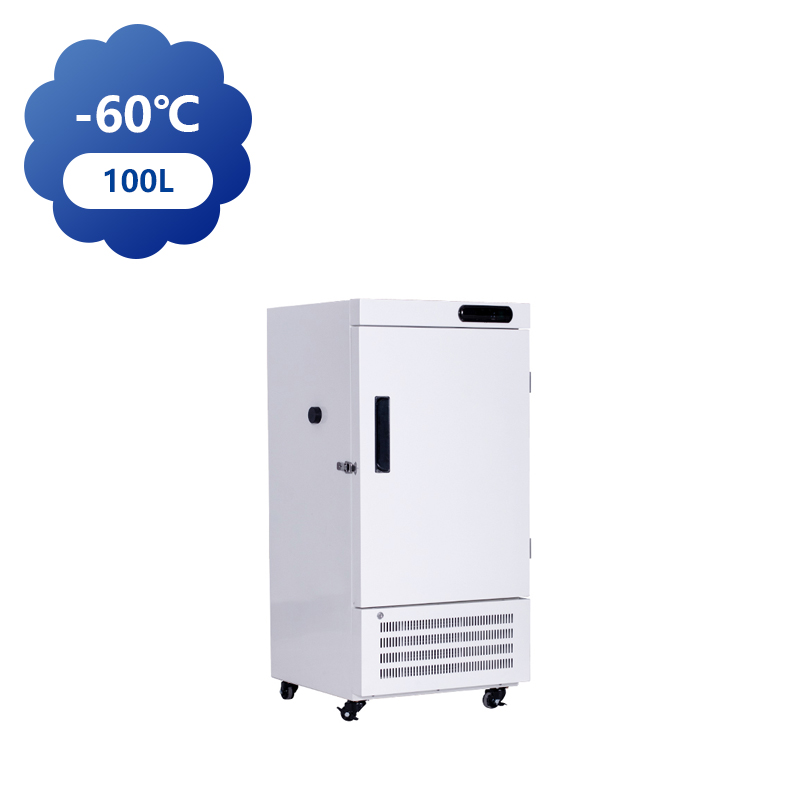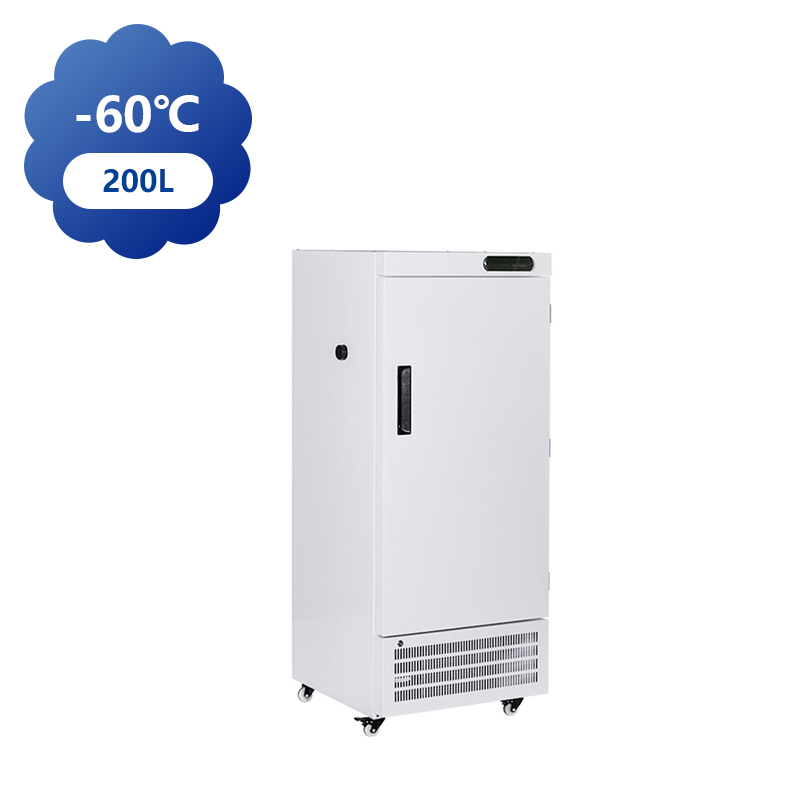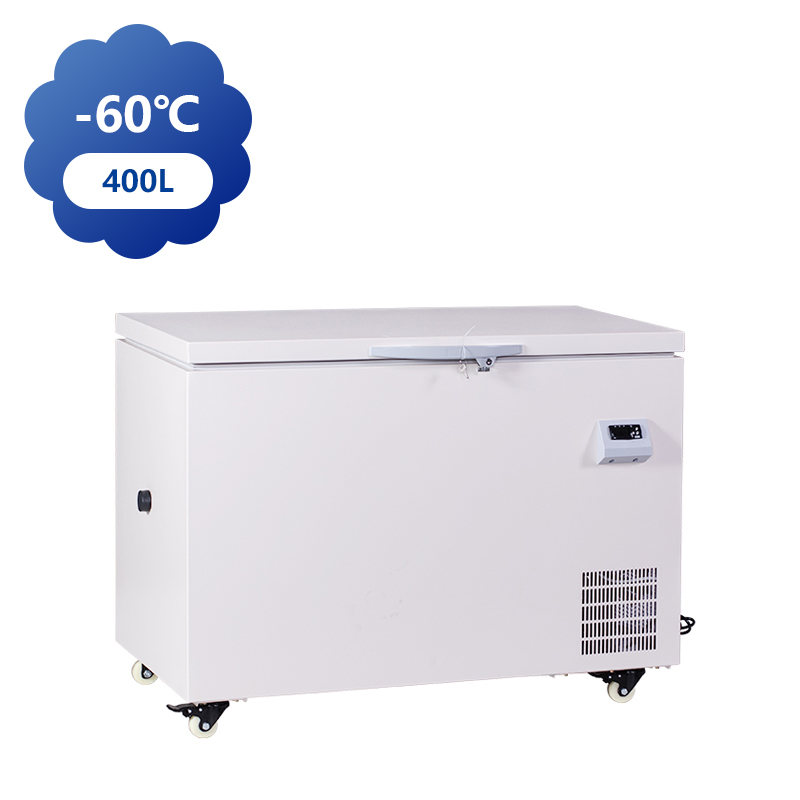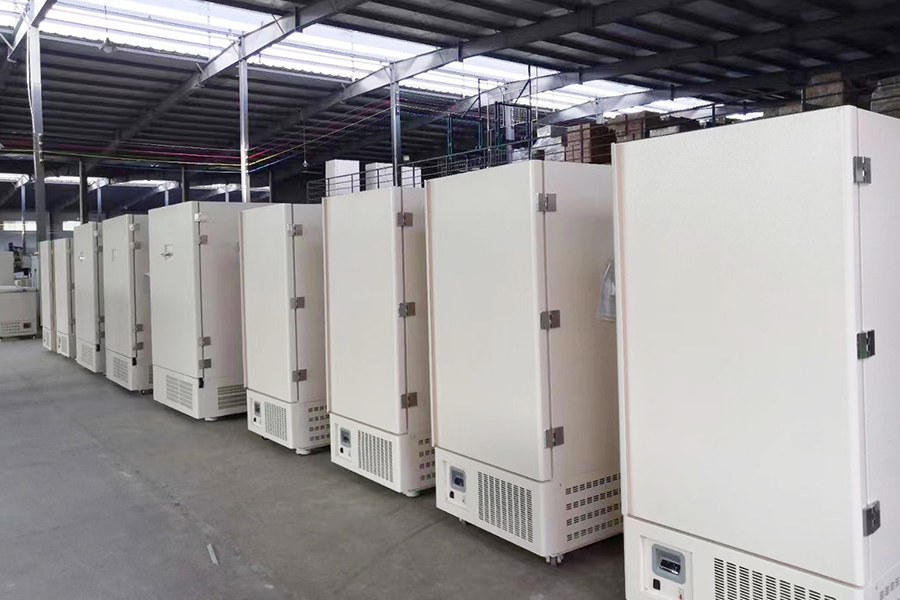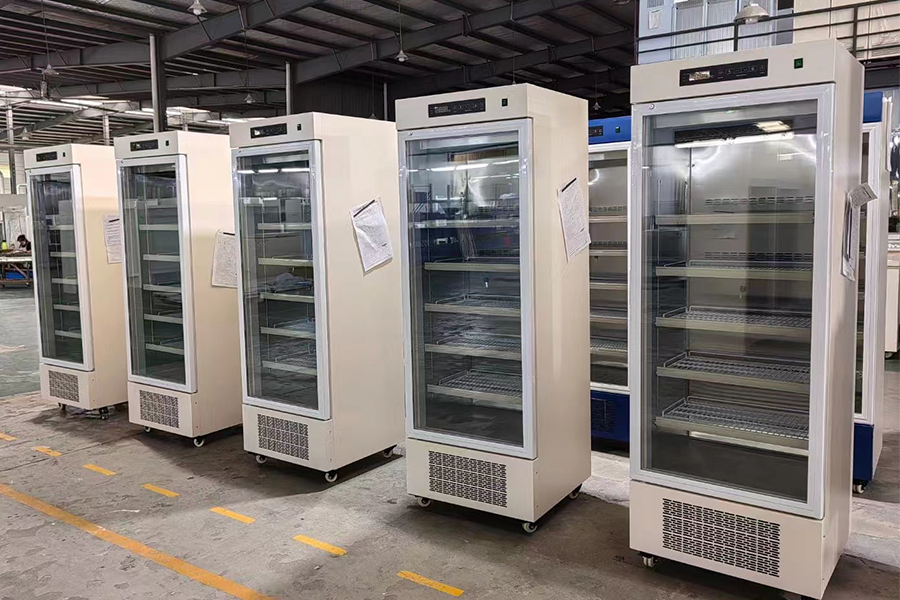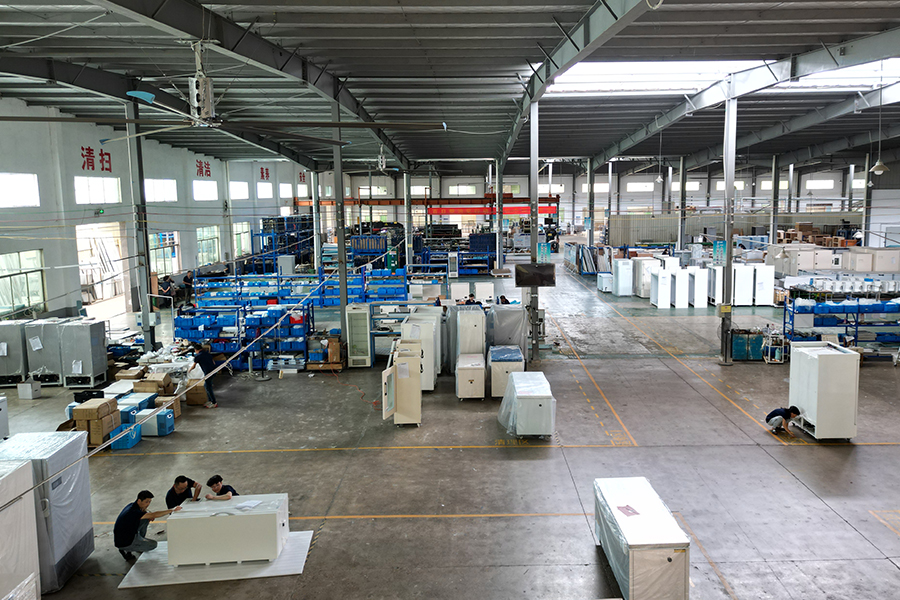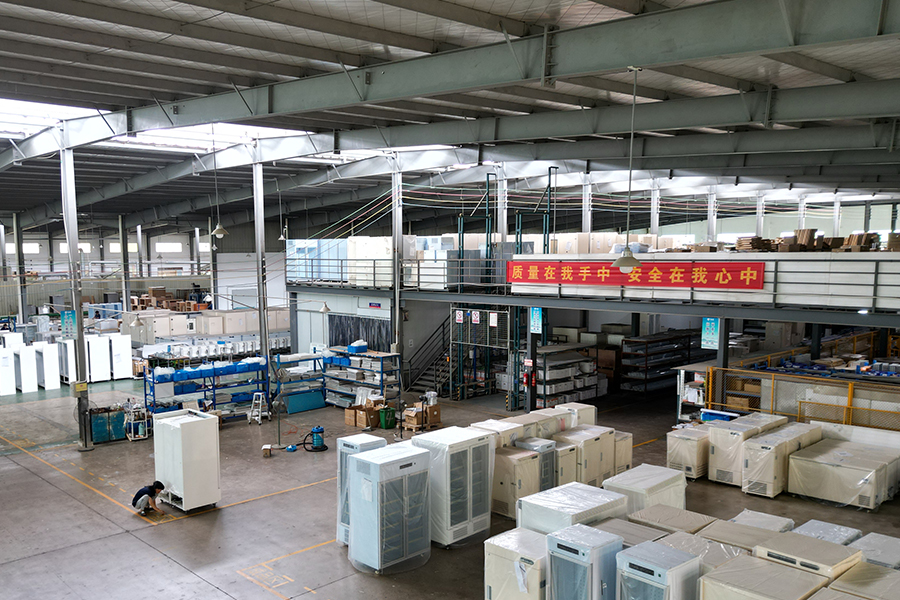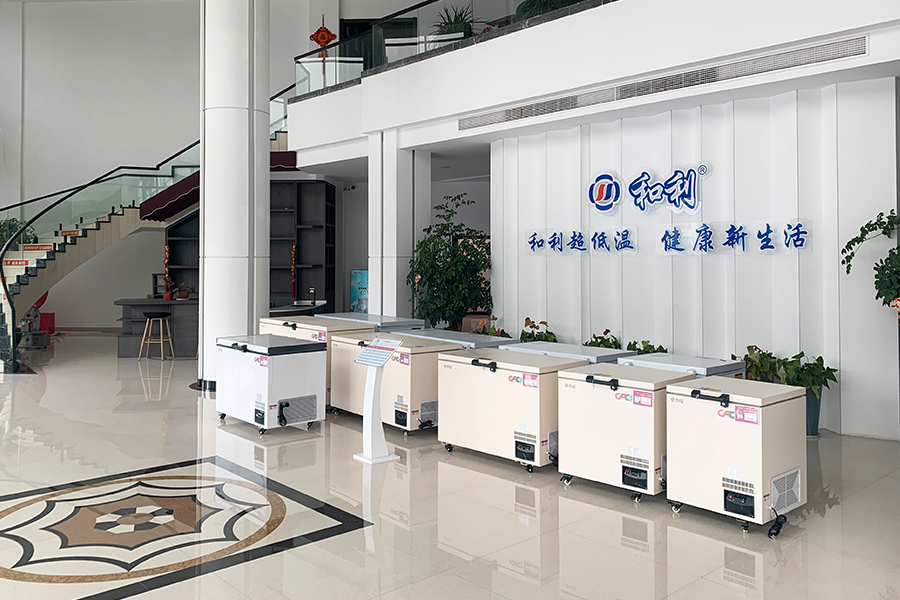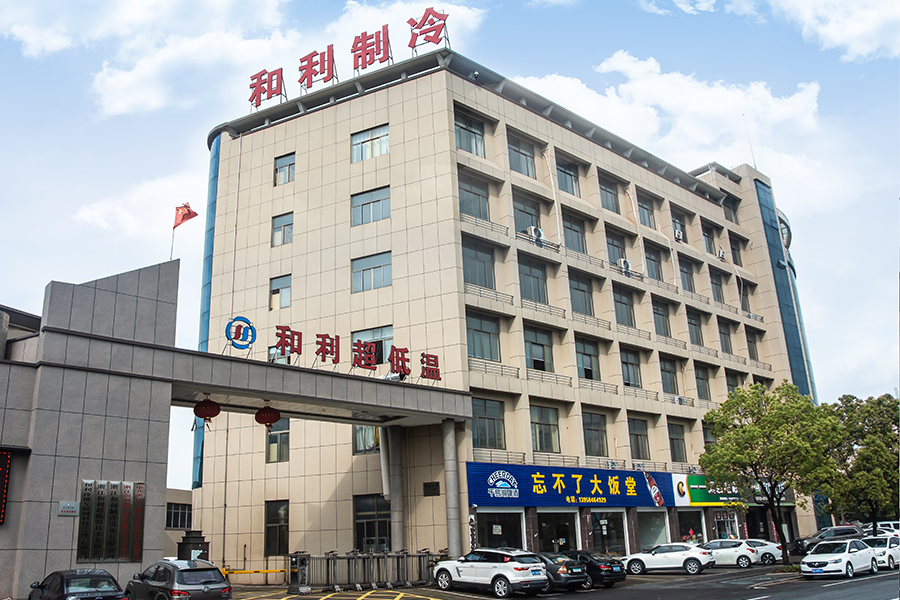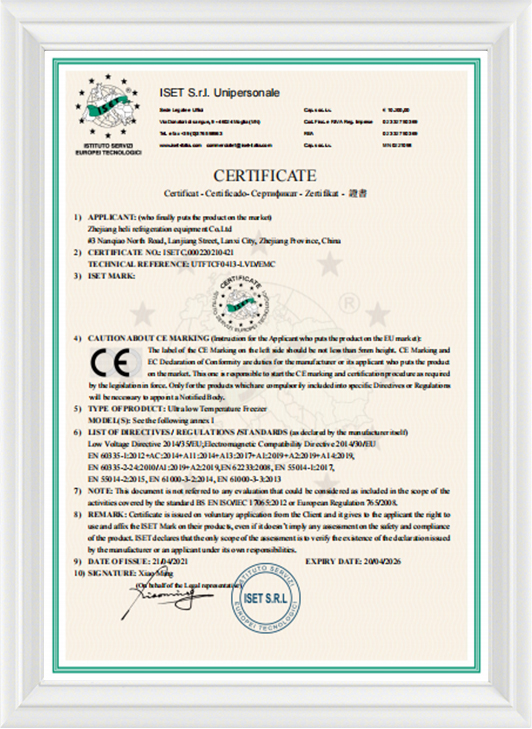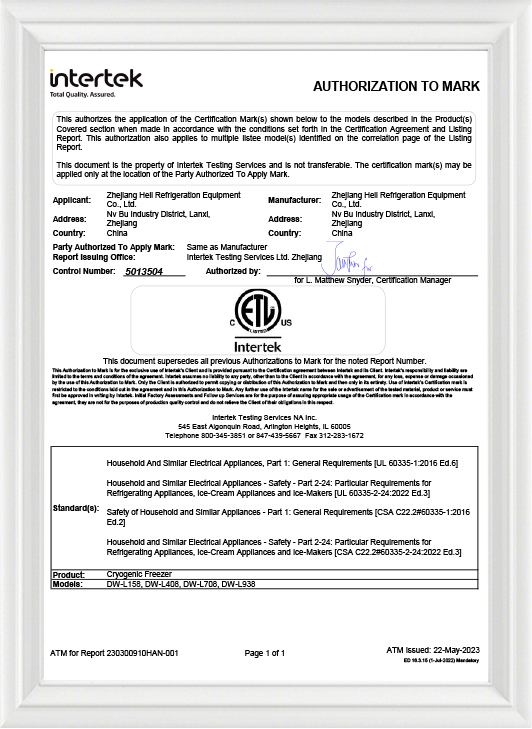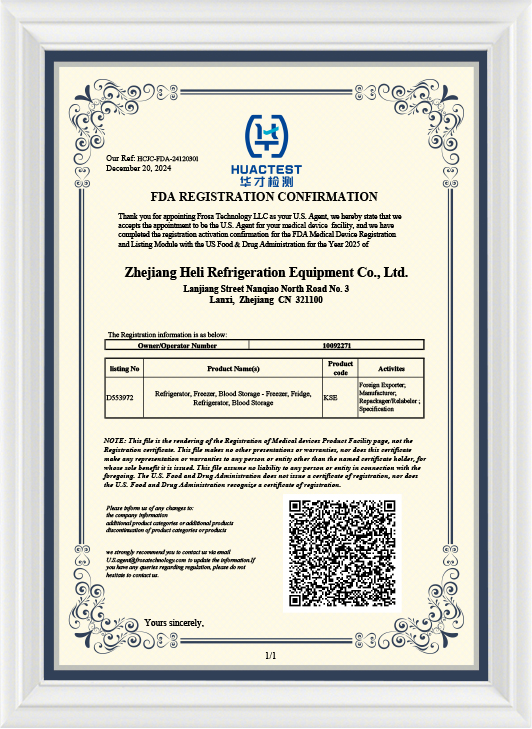A cryogenic medical refrigerator is a specialized refrigeration unit designed to preserve biological samples, vaccines, pharmaceutical products, and medical materials at ultra-low temperatures. These units ensure product stability, prevent degradation, and maintain the integrity of sensitive samples over long periods.
Vertical/Horizontal Ult Freezer -60 ℃ Supplier
We use imported compressors and fans to ensure precise temperature control of the equipment. Compared with the -86 series, this series of -60 degrees has a low unit price but stable performance. If you only need -60 to preserve your samples, this series is a good choice.
Zhejiang Heli Refrigeration Equipment Co., Ltd. owns a 25,000-square-meter modern industrial park, featuring a scientific layout and comprehensive functions. The company has established a full-chain industrial system covering technological R&D to finished product inspection, which provides a solid guarantee for the high-quality production of ultra-low temperature refrigeration equipment.
-
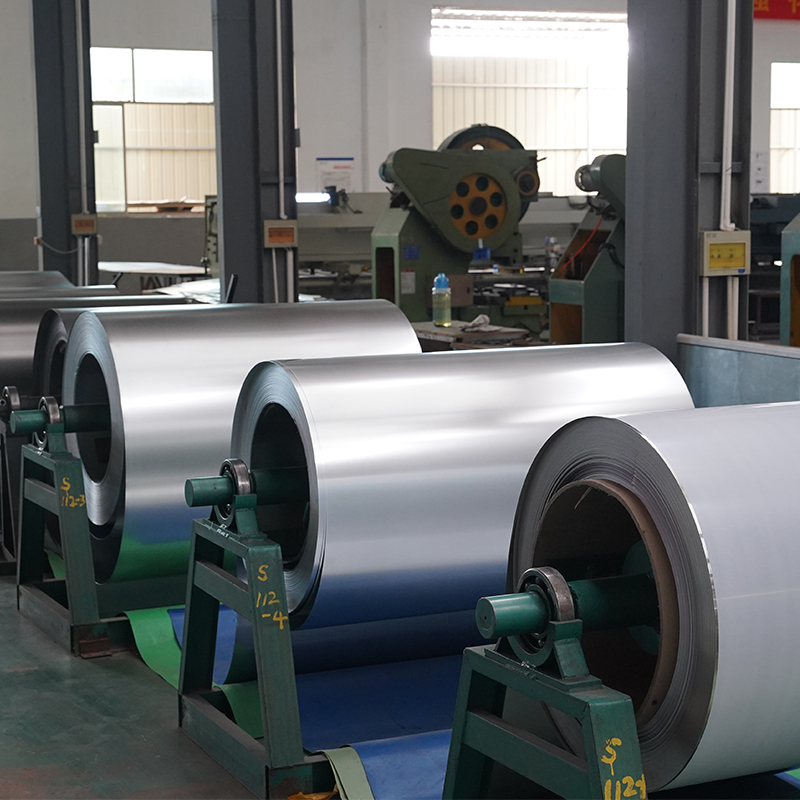 High quality raw materials
High quality raw materialsWe use high-quality raw materials, which are reliable and durable in quality.
-
 OEM/ODM
OEM/ODMWe have a professional R&D team that can design products according to different needs.
-
 Rich experience
Rich experienceWe have a professional technical team that can improve the process based on the different characteristics of the products to extend their service life.
-
 Quality inspection
Quality inspectionThe quality inspection room is equipped with advanced quality inspection devices. Before each refrigerator is dispatched, it needs to undergo various tests to ensure its stability and reliability.
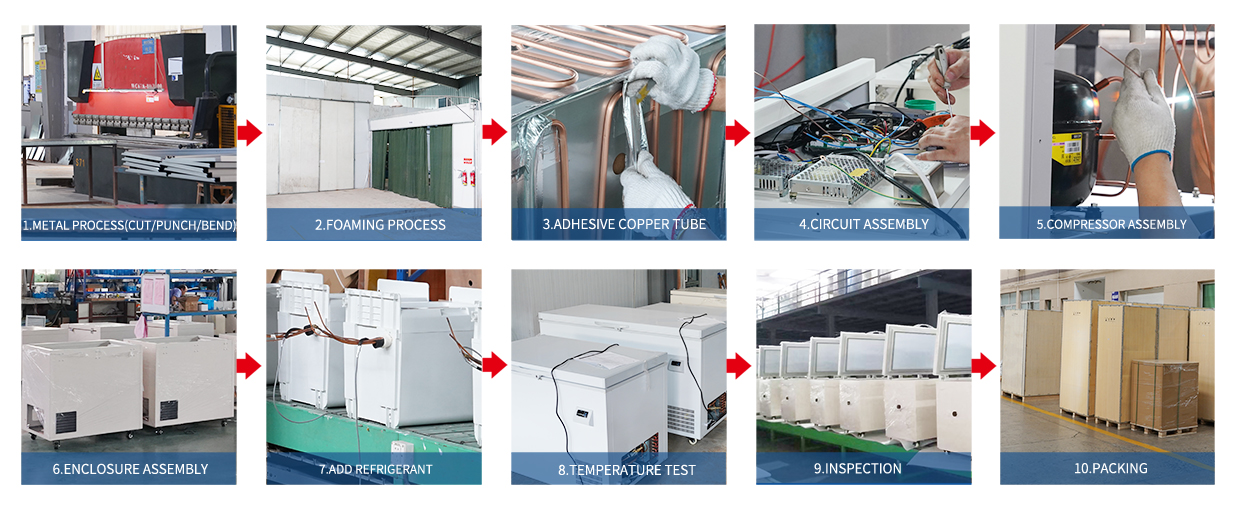
Q. 1. What is a cryogenic medical refrigerator?
Q. 2. What temperature ranges do your refrigerators cover?
Our product line includes models with various temperature capabilities:
•Pharmaceutical refrigerators: +2°C to +8°C
•Low-temperature freezers: down to –45°C or –60°C
•Ultra-low temperature freezers: –86°C
•Cryogenic freezers: as low as –150°CQ. 3. What safety and quality certifications do your refrigerators have?
Our products are manufactured in accordance with international standards and can be supplied with certifications such as FDA CE, ISO 13485, and ISO 9001. Each unit undergoes rigorous performance testing, quality inspection, and temperature calibration before delivery.
Q. 4. How do you ensure temperature accuracy and reliability?
Each model is equipped with a high-precision digital temperature control system, real-time monitoring sensors, and audible/visual alarm functions to detect temperature deviations. Optional data logging and remote monitoring systems are available for enhanced safety and traceability.
Q. 5. Can the refrigerators be customized to meet specific requirements?
Yes. We offer customization options for capacity, interior configuration, voltage, and monitoring systems. Custom branding, data interfaces, and alternative refrigerants (environmentally friendly options) can also be provided upon request.
Q. 6. Do you provide international shipping and after-sales service?
Yes. We export globally and work with logistics partners experienced in handling precision laboratory equipment. Our technical team provides remote support, spare parts, and professional guidance for installation and maintenance.
Q. 7. What are the maintenance requirements for cryogenic refrigerators?
Routine maintenance includes cleaning condenser filters, verifying temperature uniformity, and periodically checking door seals. Our after-sales team can provide maintenance guidelines and technical training for your staff to ensure optimal performance and longevity.
Q. 8. How can I choose the right model for my application?
Our sales engineers will assist you in evaluating your storage requirements — such as temperature range, sample volume, installation space, and power configuration — to recommend the most suitable model for your application.
Q. 9. Do you work with distributors or OEM partners?
Yes. We welcome collaboration with qualified distributors and OEM partners worldwide. We provide full technical support, marketing materials, and training to help our partners serve their markets effectively.
-
In sectors like healthcare and food delivery, maintaining ultra-low temperature conditions during transport is essential. Whether you're carrying vaccines, biol...
READ MORE -
When transporting temperature-sensitive materials—be they biological samples, pharmaceuticals, or premium perishables—a combination of ULT Car Freezer and ULT P...
READ MORE -
When choosing a portable freezing solution, users frequently compare ULT car freezers (mounted or integrated into vehicles) versus standalone ULT portable freez...
READ MORE -
The transportation of perishable goods requires precision, especially when it comes to temperature control. In the last years, ULT car freezer has gained signif...
READ MORE
Energy-Saving Considerations for -60℃ Vertical/Horizontal ULT Freezers
Energy efficiency is one of the primary concerns when it comes to operating -60℃ ULT freezers, as these units often run continuously and consume significant power. Several factors influence the energy consumption of vertical and horizontal ULT freezers, and addressing these considerations can bring about substantial energy savings.
Efficient Compressor Technology: One of the main contributors to energy use in ULT freezers is the compressor. Modern -60℃ ULT freezers often feature variable-speed compressors, which adjust their speed based on the cooling load. These compressors operate more efficiently than traditional fixed-speed compressors by reducing energy consumption when less cooling is needed. In addition, the use of inverter-driven compressors helps maintain a more stable temperature, reducing fluctuations that can require extra energy to compensate.
Improved Insulation Materials: Insulation is another key element that affects energy consumption in ULT freezers. High-quality insulation materials, such as polyurethane foam or vacuum-insulated panels (VIPs), help reduce heat transfer between the interior and exterior of the freezer. By heat gain from the surrounding environment, these insulation materials reduce the load on the refrigeration system, allowing the freezer to maintain its set temperature with less energy.
Door Design and Seal Quality: The door is one of the significant areas where energy is lost in ULT freezers. High-quality seals and energy-efficient door designs can minimize heat infiltration when the door is opened. Additionally, vertical ULT freezers often perform better than horizontal units in terms of door sealing, as they tend to have smaller door openings, which reduces the amount of cold air lost during access. Insulated door covers and advanced sealing technologies, such as magnetic gaskets, also contribute to better insulation and energy efficiency.
By incorporating these energy-saving technologies and strategies, -60℃ vertical and horizontal ULT freezers can reduce their operational costs while still providing the reliable performance needed for the safe storage of temperature-sensitive materials.
Insulation Materials for Small Ultra-Low Laboratory Freezer
The insulation material used in small ultra-low laboratory freezers plays a critical role in their efficiency, energy consumption, and overall performance. These units are typically used in environments where space is limited, and energy conservation is a top priority. The selection of insulation materials is, therefore, essential to ensure that the freezer can operate effectively without wasting energy.
Polyurethane Foam (PUF): Polyurethane foam is one of the commonly used insulation materials in small ultra-low laboratory freezers. It offers a good balance of thermal insulation properties, mechanical strength, and cost-effectiveness. PUF is known for its low thermal conductivity, meaning that it can effectively limit the heat transfer between the interior and exterior of the freezer. The foam is lightweight, durable, and can be easily molded into the shape of the freezer's walls, making it an ideal option for compact units. However, the overall effectiveness of polyurethane foam depends on its density, with higher-density foams offering better insulation performance.
Vacuum-Insulated Panels (VIPs): Vacuum-insulated panels are another insulation material often used in high-performance small ultra-low freezers. VIPs provide insulation compared to traditional foam materials. They consist of a core material with very low thermal conductivity, surrounded by a vacuum-sealed barrier that significantly reduces heat transfer. VIPs are particularly effective in applications where space is limited, as they provide a higher level of insulation in a thinner profile compared to other materials. This allows small ultra-low laboratory freezers to maintain the required temperature while taking up less space. However, VIPs can be more expensive and may require more delicate handling during installation to avoid damage to the vacuum seal.



 中文简体
中文简体 English
English Français
Français عربى
عربى